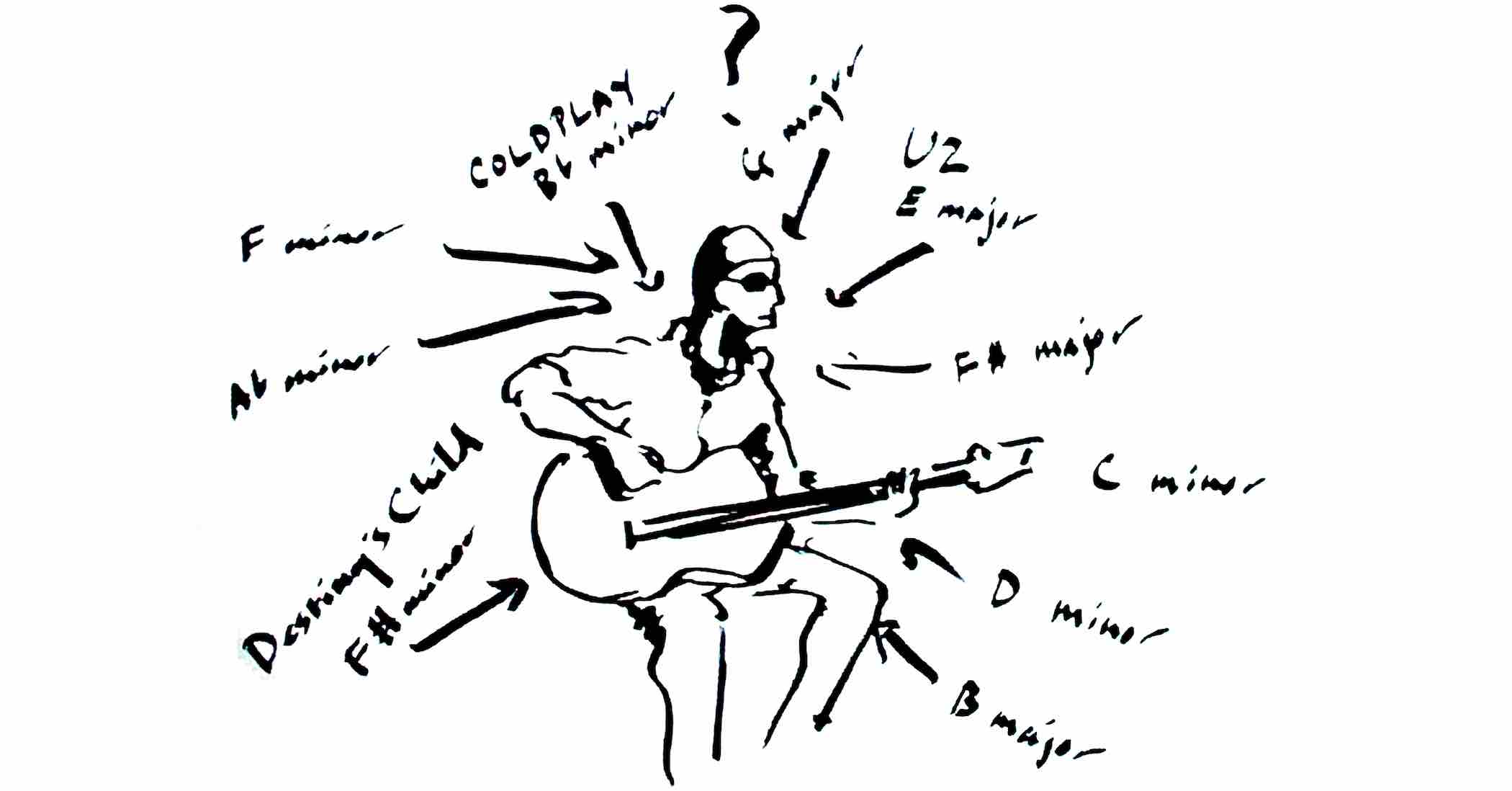One Key Ear Training Explained:
I always transcribe every song in the same key – my key happens to be C minor, but any key will work.
By doing this, you get a clear picture of how harmony works – because every song is lined up in the same key, so you can compare them easily.
And you can spot the common patterns between each song – in the melody, chords, and bass line.
Do you have perfect pitch?
I’m often asked if I have perfect pitch.
The answer is ‘no’ – I don’t have perfect pitch. I have relative pitch – although I actually have what I like to call ”perfect relative pitch’, meaning I’ve trained it to a near perfect level.
So when I listen to music – I have no idea what key the music is in. But I will just go ahead and assume that it’s in my one key of C minor…
Then I’ll come up with a theory to what the notes and chords are…
And later that day, when I return home – I’ll go straight to the piano and test my answer, by playing the notes I have in my head.

When you start doing this, you’ll build a database over time of hundreds of songs – that are all transcribed neatly in the same key.
And you’ll start spotting the recurring shapes that keep being used over and over again – and then these common shapes will make it easier to transcribe new songs in future.
What about the modes?
Not all music is written in one key though. I’d say about 95% of music is ‘diatonic’ – which means it’s written within one key.
But some music is modal – meaning it’s written in one of the modes – like the Dorian, Phrygian, or Mixolydian modes.
- Think of songs like ‘Mad World’ by Gary Jules (Dorian)…
- ‘Earth Song’ by Michael Jackson (also Dorian)…
- ‘The Ghostbusters theme song’ (Mixolydian)…
And so on.
So for all non-diatonic music, you should line each scale up from C – so that you’re transcribing in C Dorian, C Phrygian, C Mixolydian, and so on.
And the same goes for the harmonic minor scale – sometimes you’ll hear a song that’s in the harmonic minor scale…
- Like ‘Survivor’ by Destiny’s Child…
- Or ‘Pastime Paradise’ by Stevie Wonder (or ‘Gangster’s Paradise’ by Coolio).
The harmonic minor scale is a different type of scale – so you should transcribe harmonic minor music in C harmonic minor scale (C D Eb F G Ab B).
Why should I line other scales up from C?
The reason it’s important to line every scale up from C – is that some common shapes are found across multiple scales.
For example, one of the most common melodic shapes in C minor scale is this: C Eb F G
Well this melodic shape is also common across all of the minor sounding modes / scales:
- C Dorian scale – C Eb F G is still commonly heard in C Dorian.
- Or the Phrygian scale – C Eb F G is still commonly heard in C Phrygian.
- Or the Harmonic Minor scale – C Eb F G is still commonly heard in C harmonic minor.
So you can now spot this one melodic shape across all of these different scales – and the same goes for any other common shape.
But if you were learning the modes built from different starting notes (e.g. D-D white notes = D Dorian, E-E white notes = E Phrygian… don’t do this) then you would never spot this recurring pattern.
The Bigger Picture
So this means that you’re not always going to transcribe in the key of C minor / Eb major – but for any other type of scale, you still line it up from C.
And really that’s the bigger picture of this method – you’re lining everything up from C – scales, melodic shapes, chord progressions, even chord voicings I suggest you memorize from C…
So that later on, you can transpose everything you know into all other keys.
But it’s all neatly lined up in the first place, to start from C.
There’s no mental clutter.
So that’s exactly how I do it – and that’s why I have a crystal clear picture of how harmony works. It’s all lined up from C.
I believe that most musicians stay confused about music theory simply because they play in all 12 keys; every song is in a different key, which makes it very hard to spot the recurring patterns from one song to the next…

But the truth is that most music is written using the same few common shapes and patterns – and usually the only thing changing from one song to the next is the key signature.
You can hear me explain my one key ear training method fully in my free 4 part video series here:
Want to play songs by ear? Watch my free 4 part video series on ear training: